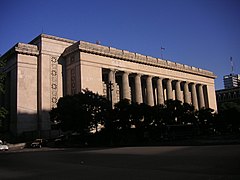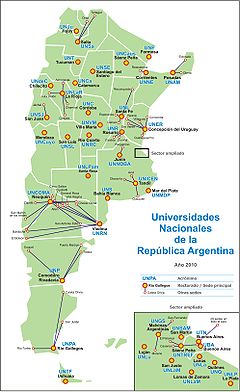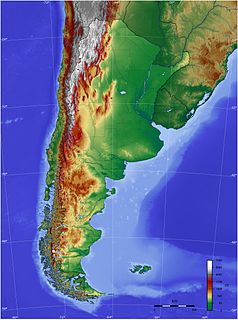
The geography of Argentina describes the geographic features of Argentina, a country located in Southern South America. Bordered by the Andes in the west and the South Atlantic Ocean to the east, neighbouring countries are Chile to the west, Bolivia and Paraguay to the north, and Brazil and Uruguay to the northeast.
Education in state institutions is at the initial, primary, secondary and tertiary levels and in the undergraduate university level. Private education is paid, although in some cases state subsidies support its costs. According to studies by UNESCO, education in Argentina and Uruguay guarantee equality to have institutional features that hinder the commercialization of education, as well as Finland has characteristics that favor multiethnic population education and special education, education favors Argentina equality. According to the last census, the illiteracy rate is 1.9%, the second lowest in Latin America. In the last decade, Argentina has created nine new universities, while the outflow of university students increased by 68%.
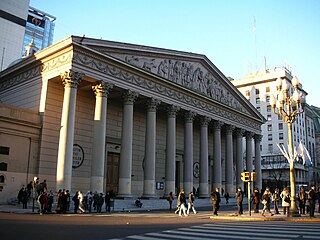
The Argentinian Catholic Church, or Catholic Church in Argentina, is part of the worldwide Catholic Church, under the spiritual leadership of the pope, the Curia in Rome, and the Argentine Episcopal Conference.
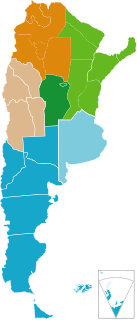
Argentina has a vast territory and a variety of climates and microclimates ranging from tundra and polar in the south to the tropical climate in the north, through a vast expanse of temperate climate. Natural wonders include the Aconcagua, the highest mountain in the world outside the Himalayas, the widest river and estuary of the planet, the Iguazú Falls, the Humid Pampas, and the Argentine Sea. Visitors enjoy the culture, customs and Argentine cuisine.

Tucumán is the most densely populated, and the second-smallest by land area, of the provinces of Argentina.

Catholic higher education includes universities, colleges, and other institutions of higher education privately run by the Catholic Church, typically by religious institutes. Those tied to the Holy See are specifically called pontifical universities.

Santiago del Estero is the capital of Santiago del Estero Province in northern Argentina. It has a population of 252,192 inhabitants, making it the twelfth largest city in the country, with a surface area of 2,116 km². It lies on the Dulce River and on National Route 9, at a distance of 1,042 km north-northwest from Buenos Aires. Estimated to be 455 years old, Santiago del Estero was the first city founded by Spanish settlers in the territory that is now Argentina. As such, it is nicknamed "Madre de Ciudades". Similarly, it has been officially declared the "mother of cities and cradle of folklore."

The following is an alphabetical list of topics related to the Argentina.

The National Atomic Energy Commission is the Argentine government agency in charge of nuclear energy research and development.

The provinces of Argentina are often grouped into eight geographical regions.

LRA Radio Nacional, also known as Radio Nacional Argentina, is the Argentine national radio station, and part of the national public media system. It started transmitting in 1937 as LRA Radio del Estado and changed its name to the current one in 1957. Since 1949, National Radio is also in charge of the Radiodifusión Argentina al Exterior, an international service that broadcasts in numerous languages.

Argentina has 35 indigenous groups according to the Complementary Survey of the Indigenous Peoples of 2004, the Argentine government's first attempt in nearly 100 years to recognize and classify the population according to ethnicity. In the survey, based on self-identification or self-ascription, around 600,000 Argentines declared to be Amerindian or first-generation descendants of Amerindians, that is, 1.49% of the population. The most populous indigenous groups were the Aonikenk, Kolla, Qom, Wichí, Diaguita, Mocoví, Huarpe peoples, Mapuche and Guarani In the 2010 census [INDEC], 955,032 Argentines declared to be Amerindian or first-generation descendants of Amerindians, that is, 2.38% of the population. Many Argentines also identify as having at least one indigenous ancestor; a genetic study conducted by the University of Buenos Aires in 2011 showed that more than 56% of the 320 Argentines sampled were shown to have at least one indigenous ancestor in one parental lineage and around 11% had indigenous ancestors in both parental lineages.
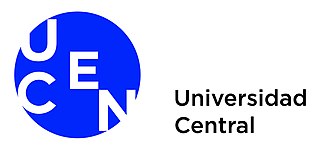
The Central University of Chile (UCEN) is the first autonomous private university in Chile, founded in 1982 in Santiago de Chile. It's accredited in the areas of institutional management and undergraduate teaching by the National Accreditation Commission of Chile for a term of four years from December 2017 to December 2021.
Margarida Cabral de Melo (1570–1631) was a Portuguese noble lady related to the discoverer of Brazil Pedro Álvares Cabral. In 1599 she settled with her husband and children in Buenos Aires. She was one of the most distinguished women in the Río de la Plata, in the early 17th century, owns of luxury homes, farms and vineyards.
The 'Campeonato Argentino de Rugby' 1987 was won by the selection of Unión de Rugby de Tucumàn that beat in the final the selection of Unión Cordobesa de Rugby.

This article presents official statistics gathered during the COVID-19 pandemic in Argentina. The National Ministry of Health publishes official numbers every night.


